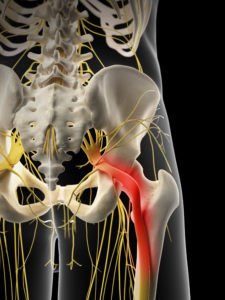
Low Back Pain
80% of the population will experience a back problem at some time in their lives.
If you’re having low back pain, you are not alone! It is one of the most common reasons for missed work! Most cases of back pain are mechanical, which means that they are not caused by fractures, cancer, or infection.
Anatomy
The low back is made up of 5 lumbar vertebra, which surround and protect your spinal cord. In between these vertebra are discs which act like shock absorbers in the spine. Ligaments help hold the vertebrae in place and tendons attach muscles to each vertebra. When in their normal position, muscles pull each vertebrae to allow them to move upon the disc so you can bend in all directions and help you support the weight of your body. Nerves come off the spinal cord, in between each vertebrae and go to every cell in your body, carrying vital information to and from your brain.
Any of the different parts of the low back can become injured and lead to back pain.

Subluxations Interfere With Your Body’s Ability to Heal
Often times, with repetitive injuries, falls, accidents or emotional stress, these vertebrae can lose their normal misalignment. This can cause irritation to the nerve coming off in between those vertebrae and leading to nerve interference. We call this misalignment a subluxation. Subluxations cause your body to work at a low level, and if left over time, can lead to degeneration and injury.

Types of Low Back Pain
Lumbar sprain/strain: from falls, automobile accidents or other sudden injuries, damage can occur to the muscles and ligaments surrounding the spinal column. The ligaments can be overstretched and tear, leading to a sprain. Muscles and tendons can tear, leading to a strain.
Spondylolisthesis: due to a defect or fracture of the bone, the vertebrae slips either forward or backward over the bone below it. This could cause injury to the nerve that exits in between the bones.
Sciatica: The sciatic nerve is actually a group of nerves that travel down the leg. When a disc herniates or degeneration has been present for a long time (usually from untreated subluxations), the sciatic nerve can be compressed. People with sciatica typically have pain and sometimes numbness and tingling down the leg.
Arthritis: many people assume that arthritis happens naturally as we age. That is partially true, but there usually is a precipitating injury that occurs first and the body, smart as it is, puts more bone down to strengthen and protect the area. Which is why you see arthritis in some joints and not others, despite the joints being the same ‘age’
Spinal Stenosis: The spinal cord travels down through all the bones of the spine in what is called the spinal canal. In this case, the spinal canal has become narrow, putting pressure on the spinal cord itself. This can cause pain, numbness and leg weakness.
Disc degeneration or herniation: The discs are the shock obsorbers of the body. If injured, they can break down and compress. There is gel-like material in the center of the disc. If the disc degenerates enough, that gel-like material can start to bulge out, or herniate (like squeezing a jelly donut). In extreme cases, the disc can rupture.
Abnormal curvatures (scoliosis): when you look at the spine from the side, you should see curves. These curves help us bend, move and help support our body. Curves should not be seen when you look at the spine from the front. Any curvatures see from the front are called scoliosis. Scoliosis may not cause any pain, but if the curvature gets too big, it can start compressing nerves, leading to pain. You can also have a situation in which the normal curves of the spine curve too much, causing a hyperlordosis, this can also lead to pain and other difficulties.
You Can Heal!
Luckily, chiropractors are the only doctors trained to locate, analyze and correct subluxations. Once these subluxations are corrected, the body is able to function and heal the way it knows how! Often prevention is the best medicine. Getting your spine checked on a regular basis helps keep the vertebra in proper alignment, and may slow degenerative changes of the spine that lead to so many ailments.
“I was skeptical for years when it came to chiropractic’s but it became an issue when at 30 years old I could barely move and had severe back pain. I braved a visit to Dr. Dan and it’s the best decision I’ve made in a long time. I actually look forward to adjustments now!! I feel amazing, I move again and It has inspired me to live a healthier life style! The office is a relaxed and fun atmosphere! I highly recommend Dr. Dan and Dr. Kris!”
Stephanie T. • Patient
If you having low back pain, getting it taken care of as soon as possible is critical for you to get good results. The back pain may go away temporarily, but it always comes back, and comes back worse!



